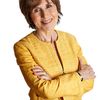If more women than men graduate from college (60 percent vs. 40 percent) and women constitute half of today's work force, why is that barely one-quarter of those women work in the field of science?
This is all the more surprising when one adds in the fact girls' math and science grades in school are higher than the grades of their male counterparts.
While efforts are ongoing to bring more female talent into scientific professions, the Grolier Club in Manhattan has made an excellent contribution to inspiring interest by mounting a landmark exhibition that recognizes the achievements of women in science and medicine over the last four centuries.
The exhibition, "Extraordinary Women in Science and Medicine," explores the legacy of 32 remarkable women whose noteworthy accomplishments contributed to the advancement of science. The exhibit highlights work in physics, chemistry, astronomy, mathematics, computing, and medicine.
More than 150 original items, including books, manuscripts, periodicals, offprints, dissertations, and laboratory apparatus (such as that used by Marie Curie during her earliest work on radioactivity) are on view and illuminate the mostly little-known careers of these female scientists.
"Their gender was against them, but the women achieved because they remained steadfast in their passion and their curiosity," says Paulette Rose, Ph.D., one of the three curators who spent two-and-a-half years researching these women and hunting down items from other collections to borrow for the exhibit. The other two curators were Ronald K. Smeltzer, Ph.D. and Robert J. Ruben, M.D.
Nineteenth Century Contribution to Computer Science
The exhibit is organized by specialty, and while there are many stories and objects to linger over, I was quite taken by the story of Augusta Ada Baron (1815-1882), daughter of Lord Byron who, in the nineteenth century, helped lay the groundwork for computer science.
Ada, as she was known, was provided an excellent education by her mother who made certain that her daughter was tutored in many subjects, including math and science, areas in which the young woman excelled.
In 1833 Ada met Charles Babbage (1791-1871), the inventor of mechanical computing concepts. Babbage had turned from his work on his first calculator, the Difference Engine, to what he called the Analytical Engine. At the end of eight years, Babbage had a detailed plan that scientists agree had all the elements of a digital computer though the device was never made.
Babbage asked Ada to translate his paper into English and she did, undertaking the task and adding a series of explanatory notes that were longer than the original article. After seeing her work, Babbage noted that Ada's addendum further explored and perfected ideas that he had not taken far enough.
As appropriate to the time, her authorship was noted with only her initials. Five years later the mystery was explained; wording was added that the notes had been written by "a lady of distinguished rank and talent." A footnote mentioned that it was Lady Lovelace (her married name and title.)
Babbage expert Alan G. Bromley writes that the paper was considered the most important paper in the history of digital computing before modern times.
Florence Nightingale Taken Further
While each story contains such remarkable accomplishments, the example of Florence Nightingale (1820-1910) indicates that the curators refused to stop at the obvious. While Nightingale is well-known for her contributions to nursing, the exhibit instead highlights her work in statistics. By keeping statistics on her patients, she pioneered evidence-based medicine.
Special Symposium on Saturday, October 26
In conjunction with the exhibition "Extraordinary Women in Science & Medicine: Four Centuries of Achievement," a half-day symposium has been organized for Saturday, October 26, 2013, from 1-5 pm. The program is open to the public.
All three curators will be on hand to introduce an esteemed group of speakers:
Dava Sobel, historian and well-known author of "Longitude" and "Galileo's Daughter." She is currently a writer-in-residence at Smith College. The title of her paper is "C.P-G: Deciphering the Stars," and refers to Cecilia Payne-Gaposchkin (1900-1979) and the other women who were at Harvard.
Sharon Bertsch McGrayne, journalist, historian, and author of such critically acclaimed books as "Nobel Prize Women in Science: Their Lives, Struggles and Momentous Discoveries" and "The Theory That Would Not Die: How Bayes' Rule Cracked the Enigma Code."
Professor Paola Bertucci, Assistant Professor of History and History of Medicine, Yale School of Medicine, will present a relatively unknown Italian scientist who is not included in the exhibition, "The in/visible woman: Mariangela Ardinghelli and the circulation of knowledge in the 18th century."
Dr. Sandra Masur, Professor of Opthalmology and Director of the Office for Women's Careers at the Icahn School of Medicine at Mount Sinai. Her talk is entitled "The XX Files: The Mystery of the Disappearing Women Professors."
Admission is free but reservations are recommended. Call 212-838-6690 x 7 or email mbrennan@grolierclub.org. The Grolier Club is located at 47 E. 60th Street.
To Visit
Visitors who would like to stop to see the exhibit may come between the hours of 10 a.m.-5 p.m. Monday-Saturday. There is no charge for admission. "Extraordinary Women in Science & Medicine: Four Centuries of Achievement" is on view through November 23, 2013.
The Grolier Club was established in 1884 as a membership society to foster appreciation for books and prints and their art, history, production, and commerce.
To read additional stories of women's achievements, visit the Inspirational Women section at www.americacomesalive.com
